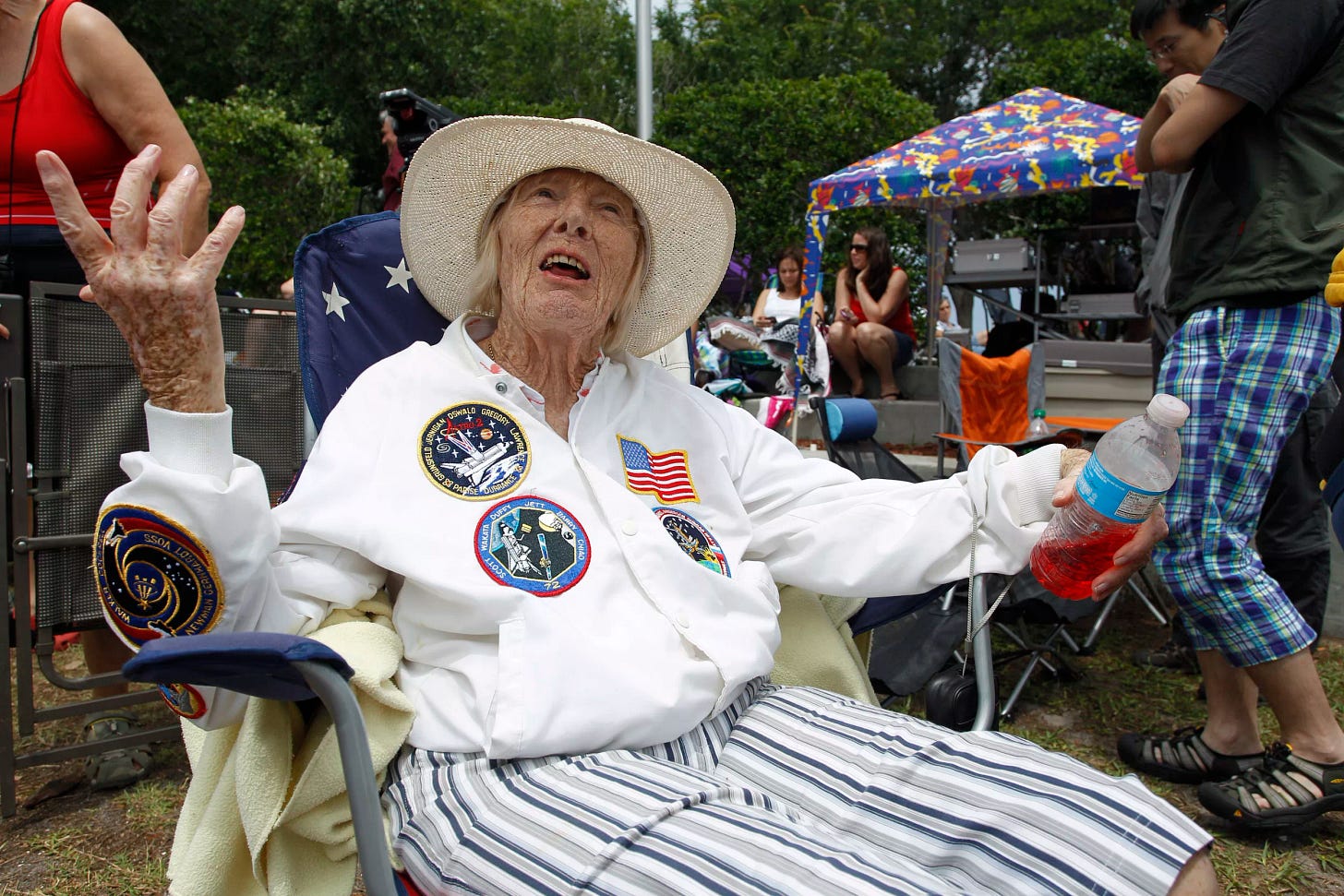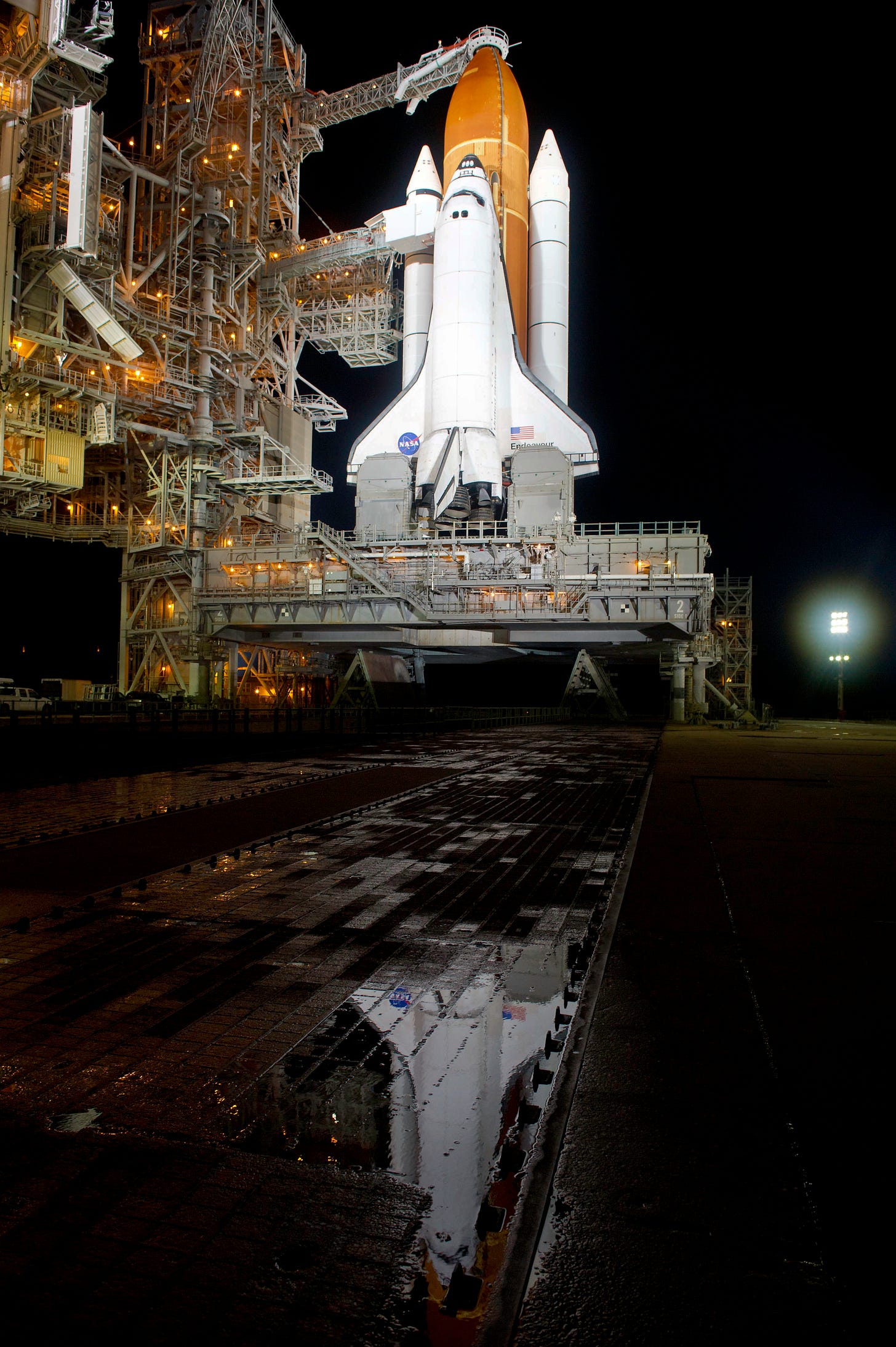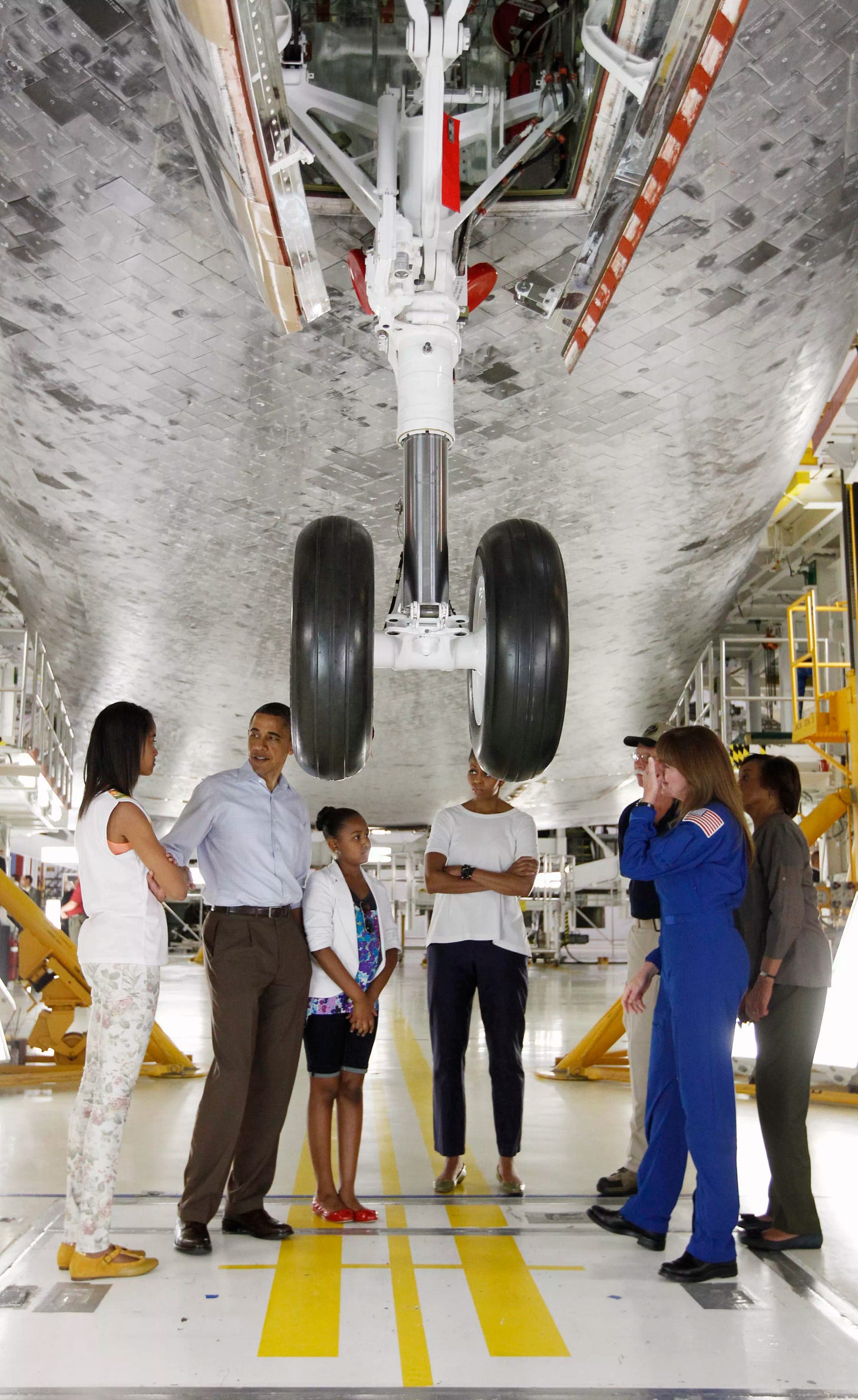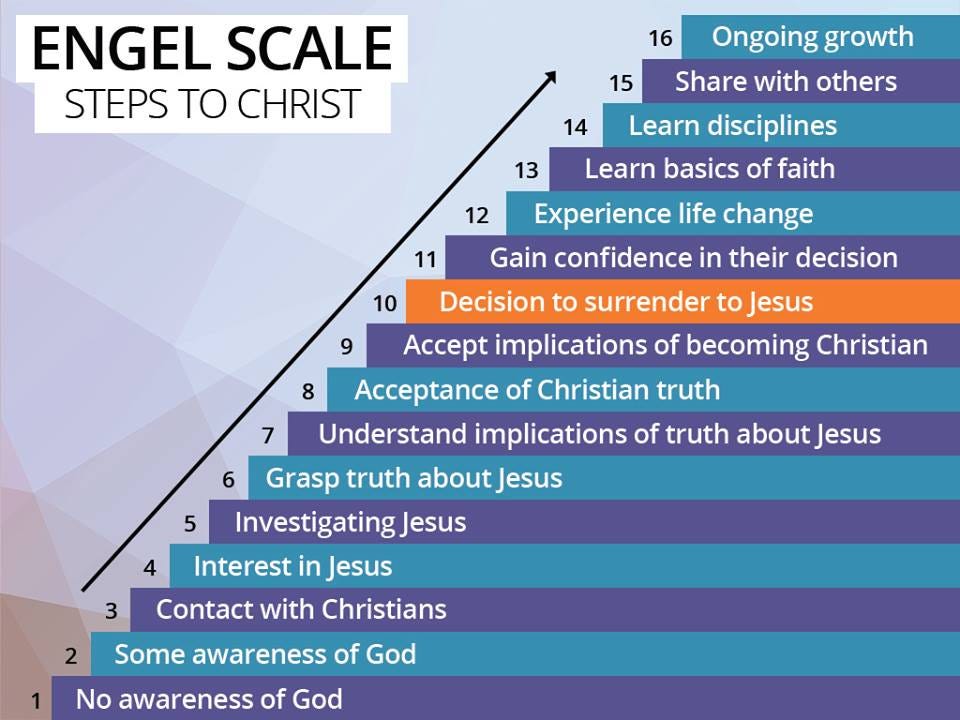On April 29, 2011, Kate Middleton married Prince William at Westminster Abbey in London. However, unlike the rest of the world, my father and I didn't watch any of it. Instead, we found ourselves amidst a crowd of thousands of NASA enthusiasts, about to embark on a once-in-a-lifetime experience.
While on holiday in Florida, my family and I discovered that one of the final Space Shuttle expeditions was scheduled to launch at Cape Canaveral, near the Kennedy Space Centre. My dad and I chose to forgo the Royal Wedding and the daily Disney queues to embark on a thrilling space adventure. The NASA mission was code-named STS-134 and the Space Shuttle Endeavour was set to dock with the International Space Station. How exciting! We were hyped to hear the thunderous roar of the mighty space shuttle with its massive orange fuel tanks defying Earth's gravity and leaving behind a fiery trail of exhaust.
Except we would soon find out it wasn’t meant to be.
Anticipating over half a million visitors to the launch site, we rose early and made our way to Titusville, a small Florida town offering a stunning view of the launch pad along the coastline. Securing a prime spot on the beach, we beheld Launch Pad 39A, located a mile across the estuary. The area was teeming with crowds, occupying every bridge, carpark, and available space, eager to witness this momentous occasion. Engaging in conversations with friendly older people who donned NASA jackets and aviator shades enriched the experience. The vibrant atmosphere was a quintessential American scene, with countless American flags, sprawling RVs, and the tantalising aroma of barbecues permeating the air.
Crowds at Titusville on 29th April 2011. Source: Spokesman.com
On the beach there were several large sets of speakers tuned directly into Mission Control and you could listen to the sound of the Astronauts talking with the Command Centre as they were completing their technical checks. It was incredible!
“Booster Systems - CHECK.”
“Trans-Earth Injection - CHECK”
“Guidance Navigation System - CHECK”
Before long the Astronauts were driving down the runway in their space buggy heading to the shuttle. All of a sudden someone from Mission Control said the Florida equivalent of “Houston we have a problem…”
Right at the final moment the technical team found a minor issue with one of the Auxiliary Power Units. This meant that a tiny heat shield did not function as expected causing them to abruptly cancel the whole launch.
Designed in the 1970s, the equipment on these spacecraft was incredibly old and almost impossible to replace. There is a funny true story where at one point, NASA had to buy parts for their Shuttle that no one made anymore from NASA collectors on Ebay! The whole space shuttle programme is estimated to have cost £173 Billion at a princely sum of 1.3 Billion per flight.
The whole flight was scuppered due to a little fault. It turns out rocket launches are a high stakes game.
Source: NASA - Space Shuttle Endeavour - April 2011
So there we were in the middle of half a million people when my Dad and I realised there was not going to be a launch that day. If we didn't move fast, then those Astronauts were not the only ones about to be grounded. Pushing aside our sense of disappointment, our next mission was to get out of the city before the crowds packed up their oversized hotdogs and caused a gridlock.
As we rushed back to the car and drove down the freeway, I looked up to the bright blue shuttle-less sky and noticed three Military Helicopters directly overhead flying parallel with the road. In the middle was Marine Force One carrying none other than President Obama and his entire family who had been there at the Space Centre to view the launch.
President Obama flew directly over our head!
Source: NASA - Obama visiting the Space Centre on Launch Day
Failure to Launch
Here are a few reflections on that malfunctioned mission:
It was a big expensive event that required a huge amount of resources.
It took countless professionals and experts to pull off.
It required a complex build up in advance that would not be sustainable everyday.
It had a high risk factor - a lot was riding on one big moment.
It gathered massive crowds yet did not fulfil its purpose.
While we missed witnessing the space shuttle launch, that day with my dad remains etched in my memory. It also prompted me to reflect on the church's approach to its mission of making disciples. Often, we place excessive emphasis on big platform, large-scale events that demand significant resources, rely heavily on professionals and experts, involve intricate build-ups, carry high risk factors, and draw massive crowds but often don’t fully achieve their purpose.
So often we experience a failure to launch when it comes to attempting mission in the church. We default to thinking it has to be about big spectacles that light up the sky like a rocket.
In the 1970s, researcher James Engel delved into the waning effectiveness of church outreach, particularly the long-term impact of popular large-scale evangelistic events. These events saw thousands of people converting, raising their hands, rushing to the altar, and filling out response cards. It was anticipated that the community would flourish as a result. However, a short time later, the actual number of people joining the local church was negligible.
While these activities generated numerous converts, they fell short in fostering discipleship. Despite this evidence, more efforts were invested in crafting platform experiences that prioritised instant moments of conversion. Recognising the need to shift focus from the platform to the process, Engel and his colleague, Norton, authored the influential book, "What's gone wrong with the Harvest?"
The point made by Engel and Norton was not so much to criticise one particular method of mission (no model is perfect anyway), but to make us rethink the whole idea of conversion altogether. They developed the world-famous Engel Scale to benchmark the journey someone took from not knowing God through to spiritual maturity over several stages. This idea was revolutionary, not so much because it recognised the steps a person had to take after their conversion, but the ones they made before it.
Just as a tiny heat shield can influence momentum for liftoff, perhaps it is time to recognise the power of tiny moments of connection that, when combined with faith, hope and love, can cause our mission to really fly. And the good news about this approach to outreach is that you don’t have to be an expert to take part. You won’t lose your opportunity if the slightest thing doesn’t work out perfectly. This is not about one big expensive moment in the making. You don’t have to have a huge platform to launch from. You can start by deciding to go on an adventure with someone you care about.










I loved the last line too! 😄 This post is a great reminder to me. After watching the new movie “Jesus Revolution” (which I loved!) it’s encouraging to remember that it doesn’t all look big and flashy. I am so thankful for the people that drew me in and taught me God’s word. Someone back then called it “under-shepherding” (term I heard back in the 80s & haven’t heard since-discipling others, taking them under your wing) I still like that...under our Great Good Shepherd! 😊 Being saved and coming to a knowledge of the truth as well! Both are so needed.♥️Sorry to be so wordy! You made me think of a lot!:)
Great last line!!